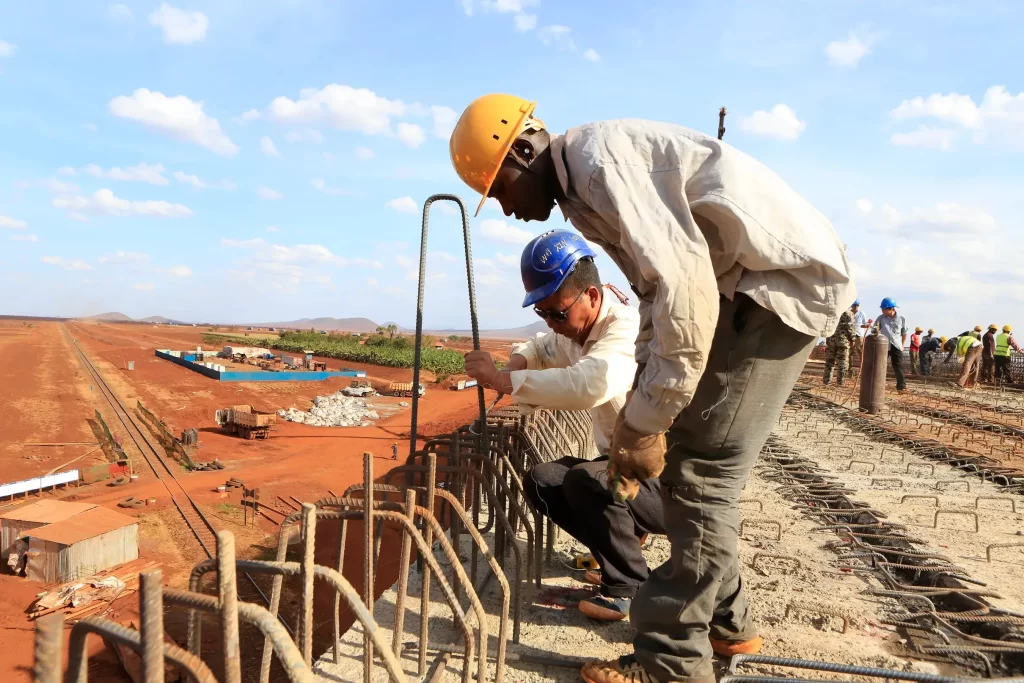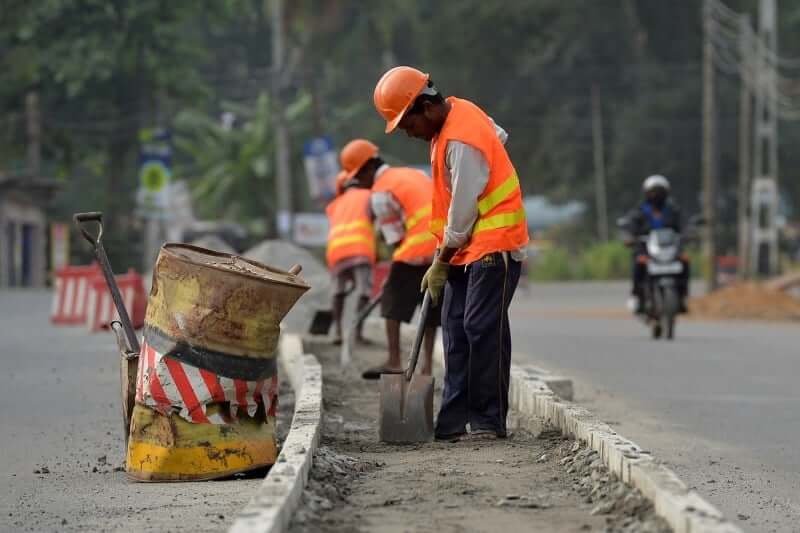As global agricultural equipment demand grows and supply chains shift, Central Asia has emerged as a promising frontier for farm equipment exporters. With countries like Kazakhstan, Uzbekistan, and Kyrgyzstan investing in large-scale mechanization and modern crop systems, the region presents an untapped yet rapidly evolving market,One Belt, One Road was born. This article provides a strategic overview of where the most promising opportunities lie.
Post-2025, the Belt and Road Initiative (BRI) is accelerating change in the region through new infrastructure, better logistics, and expanded financial partnerships. These upgrades are not only reducing transportation costs but also enabling faster access to agricultural markets—making Central Asia more attractive to exporters than ever before.
In the following sections, we’ll explore which Central Asian countries offer the greatest demand for specific equipment types, what crops are driving modernization, and how exporters can gain a competitive edge through localized support, certification, and strategic partnerships.
Contents
- 1 I. Overview of Central Asia’s Agricultural Landscape
- 2 II. Belt and Road Expansion: What Changes in 2025 and Beyond?
- 3 III. What Equipment Types Are in Demand?
- 4 IV. Competitive Landscape: Who Are the Key Players?
- 5 V. Market Entry Challenges (and How to Overcome Them)
- 6 VI. How Exporters and OEMs Can Achieve Sustainable Growth in Central Asia
- 7 Conclusion:
I. Overview of Central Asia’s Agricultural Landscape
1.Arable Land and Crop Patterns
Central Asia’s agriculture is highly diverse: Kazakhstan dominates grain production with wheat, barley, and corn; Uzbekistan is a global cotton leader and expanding fruit and vegetable sectors; Kyrgyzstan and Tajikistan focus on mixed farming but face mountainous terrain challenges; Turkmenistan relies on irrigation for cotton and melon farming.
2.Mechanization Gap
The region’s mechanization remains low compared to global standards. Many farms still depend heavily on outdated Soviet-era equipment and lack access to digitalized tools. Additionally, private-sector farms and state-run farms show wide disparities in modernization levels.
3.Climate and Soil Challenges
Dryland conditions across much of Central Asia demand resilient, heat-adapted machinery. Rising concerns over soil erosion and water scarcity are driving strong demand for precision irrigation systems and conservation-focused farming equipment.
II. Belt and Road Expansion: What Changes in 2025 and Beyond?
1. Infrastructure Investment
The construction of new railway corridors—such as the China–Kazakhstan–Uzbekistan link—is significantly reducing logistics costs across Central Asia. Modernized customs checkpoints now accelerate cross-border clearance of agricultural machinery. Additionally, agro-logistics hubs (e.g., in Khorgos or Tashkent) improve equipment distribution efficiency and access to remote farming areas.
2. Financing Channels and Cooperation
China is expanding its agriculture-focused cooperation funds with Central Asian countries. Governments are increasingly supporting agricultural equipment leasing and procurement through structured national plans. Certified Chinese brands like MINNUO, offering CE/EPA-compliant and modular machinery, are entering these markets via BRI-enabled finance and bundling programs.
3. Trade Policy and Compliance Trends
The region is witnessing a rise in free trade agreements (e.g., Eurasian Economic Union alignment), making compliant equipment more competitive. Chinese exporters with recognized certifications (CE/EPA/ISO) are seeing broader acceptance, while local governments are improving customs facilitation for trusted suppliers.

III. What Equipment Types Are in Demand?
As Central Asia accelerates its agricultural modernization, several categories of farm machinery are seeing surging demand across different countries:
Mid-Range Tractors (60–100HP): Widely needed for grain and cotton cultivation, especially in Kazakhstan and Uzbekistan. These horsepower models strike a balance between affordability and versatility for mid-sized farms.
No-Till and Minimum-Tillage Implements: Increasingly adopted in Kyrgyzstan and parts of Kazakhstan to combat soil degradation and erosion. Conservation tillage is also encouraged by regional sustainability programs.
Sprayers and Drip Irrigation Systems: Crucial in dryland areas like Turkmenistan and southern Uzbekistan. Demand is rising for efficient water-saving equipment that improves crop yields while minimizing water use.
Multi-Crop Harvesters: Central Asia’s outdated harvesting fleets are creating strong replacement needs across the region. Farmers are seeking durable and easy-to-maintain harvesters that suit wheat, corn, and cotton.
Orchard Tractors and Compact Units: In Uzbekistan and Tajikistan, where orchard and vegetable farming is expanding, compact tractors with narrow-width and high maneuverability are increasingly favored.
| Equipment Type | Rationale/Use Case | Country Focus |
| Medium-horsepower tractors (60–100HP) | Suitable for grain & cotton fields | Kazakhstan, Uzbekistan |
| No-till or minimum-till implements | Combatting soil degradation | Kyrgyzstan, Kazakhstan |
| Sprayers & drip irrigation systems | Water-saving in dry zones | Turkmenistan, Uzbekistan |
| Harvesters (multi-crop) | Needed for aging mechanized fleets | All CA countries |
| Orchard tractors & low-profile units | Fruit/vegetable sectors in valleys & plains | Uzbekistan, Tajikistan |
✅ Export tip: Products with customizable tire types, reinforced cooling systems, dust filters, and compact frames are in high demand due to terrain and climate.

IV. Competitive Landscape: Who Are the Key Players?
The agricultural equipment market in Central Asia is becoming increasingly competitive, with players from four major categories:
Local Manufacturers: These players occupy small market shares due to limited production capacity and outdated technology. While cost-effective for basic tasks, they often lack the ability to meet evolving mechanization demands.
Russian Brands: Once dominant in the region, Russian equipment is facing decline due to reduced innovation and inconsistent quality. However, their legacy presence still gives them leverage in public procurement or low-cost segments.
European Brands: Known for high quality and advanced features, but often priced beyond the reach of small to mid-sized farms. Their limited after-sales service coverage also hinders widespread adoption.
Chinese Brands: Rapidly gaining ground with CE/EPA-certified machinery, competitive pricing, and strong adaptability to local field conditions. These brands are increasingly seen as offering the best value for money.
✅ Competitive Advantage: Brands like MINNUO combine global certification, multilingual support, and modular system design to bridge the technology gap. Their localized training and flexible configuration packages are helping Central Asian partners overcome cost and capability barriers.
V. Market Entry Challenges (and How to Overcome Them)
1. Regulatory and Certification Barriers
Import procedures and certification requirements vary widely across Central Asian countries. Some markets still favor standards from the Eurasian Economic Union (EAEU) or older Russian systems, creating complexity for global exporters.
✅ Solution: Ensure all products meet CE/EPA/ISO compliance and work with agents familiar with local homologation processes.
2. Language and Training Gaps
Many end-users lack technical training or confidence to operate new equipment. Language barriers further hinder onboarding, especially in rural areas.
✅ Solution: Bundle equipment with localized training (in Russian or Uzbek), and offer remote onboarding support via Zoom, WhatsApp, or on-ground partners.
3. Financing Barriers for Small Farmers
Capital constraints prevent many smallholder farmers from upgrading equipment. Banks offer limited lending schemes, and up-front costs are often too high.
✅ Solution: Partner with microfinance institutions and cooperatives to launch “rent-to-own” models or seasonal leasing plans, with optional service packages to reduce perceived risk.
VI. How Exporters and OEMs Can Achieve Sustainable Growth in Central Asia
1. Participate in Regional Trade Shows and Demonstration Farms
Attending Central Asian agricultural expos and collaborating with government-supported demo farms provides crucial brand visibility. These platforms help build credibility with local dealers and buyers, while showcasing equipment performance in real-world settings.
2. Build Local Joint Ventures or Assembly Partnerships
Creating joint ventures or semi-knockdown (SKD/CKD) assembly partnerships allows for deeper localization and tariff benefits. Partnering with regional state-owned or large private agricultural companies also strengthens trust and facilitates brand adoption.
3. Offer Full Solution Packages
Instead of just selling a tractor, successful exporters provide bundled packages including implements, spare parts, operator manuals, and training services. This approach simplifies purchasing decisions for local buyers and increases brand loyalty.
4. Leverage Belt and Road Logistics
Using newly built rail links and BRI customs corridors can dramatically reduce delivery times and costs. Strategic use of hubs like Khorgos or Tashkent helps speed up border clearance and regional distribution.
5. Strengthen After-Sales Support and Localization
Establishing local service centers, spare parts warehouses, and multilingual support teams (e.g., Russian, Uzbek) boosts customer satisfaction and retention. Exporters with responsive after-sales systems are more likely to be selected for long-term contracts.

Conclusion:
As Central Asia accelerates its agricultural modernization in the wake of 2025 BRI expansion, the region is becoming a critical growth frontier for equipment exporters.
Those who enter early—armed with localized technology, export compliance, and reliable after-sales—will build long-term footholds in an underserved but high-potential region.
Chinese brands like MINNUO, with modular equipment, multilingual support, and flexible partnership models, are ideally positioned to lead this transformation.

